Kaizen is always considered an initiative in the context of manufacturing in factories by business managers. Kaizen transformed the model of not only in Japan but also in all parts of the globe. Practising Kaizen results in minimizing waste activities, improve effectiveness, enhanced customer service, improved employee engagement. Kaizen enables organizations cater to the ever-growing demands of delivering more to the customers and at the same time consuming less resources. Kaizen is not only about the hard benefits. It brings in a cultural change of continuous improvement involving all tiers of employees.
The Kaizen ideology is being adapted and practiced by all business sectors around the world be it Discrete Manufacturing, Process industries, Service Industries, Hotels, Hospitals, Governments and the list can go on. Hence, there are no surprises that the Farming Industry
Hence, there are no surprises that the Farming Industry
too joined the elite club of Industries that adapt and practice Kaizen. Thus, “factory” and “farm” are not different any longer. Whether
one produces “fancy-cars” or “flowers”, the business practices adapted by both the business managers are one and the same. Just as it happens with other industries, Kaizen help Farms develop, practice and sustain their objectives of becoming efficient and productive in all the tasks it performs. The tasks in a typical Farm industry are: planting, irrigation, cultural activities, harvesting, transporting, sorting & sizing, packing, storing, dispatch & distribution etc.
Kaizen is not practiced aiming at financial gains though, invariably, all entrepreneurs look for it. Financial gain is a by-product of practicing Kaizen. The cultural transformation happening in the organization is the main takeaway. The typical areas where one can visually see the
improvements in Farms are:
- Increased Quality due to standardization of cultural activities
- Increased On-time delivery to customers
- Increased productivity in Pack-house due to ergonomic workstations
- Optimized Inventory levels
- Improved yield
Kaizen means Change for better - Every day, Everywhere and Everybody. If the improvement is not happening every day, not involving everybody and not happening everywhere, then it is not Kaizen. This differential approach makes Kaizen unique be it in farms or in factories. As to bring out a change, a change in the mind-set is essential. Kaizen principles are being adapted by Farms that results in a remarkable improvement in their business, behaviour and actions.
 Customer orientation: Every business survives on catering to its customers’ needs. Kaizen emphasises on providing value to the customer. Invariably, every customer prefers three factors as Value – Quality, Cost and Delivery. These could be achieved by delivering what the customer wanted, at the time he wanted and in the quantity they wanted. Providing value to external customers are easy if we provided value to internal customers (next process).
Customer orientation: Every business survives on catering to its customers’ needs. Kaizen emphasises on providing value to the customer. Invariably, every customer prefers three factors as Value – Quality, Cost and Delivery. These could be achieved by delivering what the customer wanted, at the time he wanted and in the quantity they wanted. Providing value to external customers are easy if we provided value to internal customers (next process).
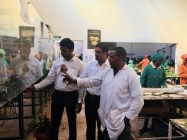 People orientation: If we have to get the best of the processes, we need to build the people accordingly because it is the people who execute the processes. The success of Farms lies in the hands of the workers. Kaizen ensures that people from all level participate and contribute. People are not problems but are problem-solvers. In Daily Kaizen, people from all tiers participate, share their concerns, identify the causes and also implement the counter measures. This enables removal of blaming culture and everyone owns accountability.
People orientation: If we have to get the best of the processes, we need to build the people accordingly because it is the people who execute the processes. The success of Farms lies in the hands of the workers. Kaizen ensures that people from all level participate and contribute. People are not problems but are problem-solvers. In Daily Kaizen, people from all tiers participate, share their concerns, identify the causes and also implement the counter measures. This enables removal of blaming culture and everyone owns accountability.
Workplace orientation:
An organized workplace is the foundation for every continuous improvement initiative. Change initiatives should always begin with the workplace because the environment influences the people’s mind. 5S is the foundation stone that has five pillars — Sort, Set in order, Shine, Standardize, and Self-discipline. The whole exercise begins with Sorting. This means removing the unwanted items from the farm. Any item that is not used on a regular basis or that does not add any value to the process or customer has to be discarded immediately. Farms have benefited by creating space that can be used for cultivating thus converting an unused land to a productive field.
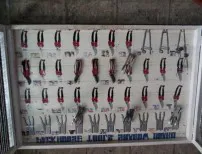 Set-in-order recommends Systematic arrangement. Easy to
Set-in-order recommends Systematic arrangement. Easy to
store and easy to retrieve. This eliminates searching time and
this time can be used productively. There are rules to follow
this.
The third pillar is Shine. Keeping the farm clean. Cleaning has to be done every day – cleaning of work stations, pumps, shredders, compressors, tools, farm-fields. Cleaning done form the inspection perspective. It is because when we inspect, we detect; when we detect, we correct it. Thus, cleaning leads to correction. Cleaning the farm free from unwanted chemicals, plastics etc will help in the long run.
Fourth pillar is Standardization. Standardisation makes it simple and easy to follow. All the activities are to be standardised. Fifth pillar is Self-discipline or do-it-by-yourself. Periodical audits, self-audits, pillar-head audits informs us where we were and where we are.
In a vast open area identifying the abnormalities is tough. Visual Management helps here. For example, during field work if the workers found any pest & disease related issues on the stems, they can put a flag (with colour codes) highlighting the spot-sprayers to work on the same. Fertigation details with pumps and blocks neatly mapped assists the workers to identify and trouble shoot. Schedule of the cultural activities on each block made visible in front of the block helps them follow the same.
Process orientation:
Kaizen insists on chasing the processes and the results because a right process would bring in the results repeatedly. It is not about achieving it somehow but doing it in a certain way which is the Kaizen way!
Everywhere the right processes has to be adapted as to get the right results. Kaizen practicing farms emphasise their employees on this and ensure the right processes are adhered. Kaizen insists on Value Stream Organization; also can be termed as farms-within-farms. If Roses are one type of crop, then the field from which roses are produced, the team that packs roses, the team that moves roses and ships roses are clubbed together and formed as Roses Team. This facilitates better communication between the processes and enables rapid trouble-shooting. Immediate feedback regarding the pests & diseases, infected stems, open-buds are communicated to field team who can correct such error in their next cultural activities.
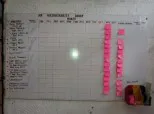 Farms too have maintenance activities. Pump rooms, compressors, shredders, lighting lines, workstation design, irrigation lines & distribution, maintenance of tractors, transport vehicles and the list goes on. Autonomous Maintenance enhances the life of the spares, increases the life of the blades in shredders that results in energy-saving; simply arresting the leaks from all the irrigation lines led to saving of 6 hours of pumps running in one of the farms per day.
Farms too have maintenance activities. Pump rooms, compressors, shredders, lighting lines, workstation design, irrigation lines & distribution, maintenance of tractors, transport vehicles and the list goes on. Autonomous Maintenance enhances the life of the spares, increases the life of the blades in shredders that results in energy-saving; simply arresting the leaks from all the irrigation lines led to saving of 6 hours of pumps running in one of the farms per day.
Scientific Orientation:
As to ensure the right flow, one has to observe the processes and look for wastes or non-value adding activities. Waste is not the problem per se, but are the symptoms of the existing problems. Elimination of waste frees the capacity. If we are eliminating non-value adding activities that results in wastage of 1 hour a day, would save the farms 37 work-days in a year. Improvement by deletion – this is what Kaizen prescribes. Wastes classified as 8 types have to be minimized or eliminated – they are: Defects, Over processing, Waiting, Unused skills, Transportation, Inventory, Motion and Excess production.
Systematic approach: Applying DoE on the block size, number of beds per block, length of the bed, plants per bed, stems per plant resulted in saving of almost 140 acres of land for one of our clients. This is a perfect illustration of stating Waste equals free capacity.
Where is the money?
Kaizen is not practiced for money, though, business players look for it – where is the extra money? Or in other words, where have we cut the extra money? A 5% saving from a farm every year for a decade, the business is grown up by 50% which is a remarkable growth for any kind of farm.
Kaizen approach is not about getting bigger and bigger by years but about becoming more efficient, effective, establishing better processes, empowering employees etc., The business can be grown by being more effective and efficient by deleting the non-value adding activities. This has worked well for many farms and will work for others too. Typical Results Table: (Results experienced by Flower Farm who practiced Kaizen with our guidance for 3 years and still continuing)
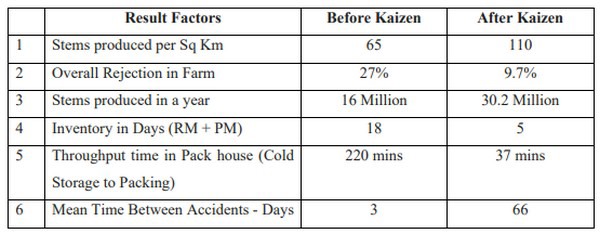
All these results are proven, however, will vary from Farm to farm, crop to crop and the manner in which Kaizen is being deployed. The biggest advantage with practicing Kaizen is, even if we implemented it wrongly, we would get benefits. At the end of the day, Excellence is all
about perennial pursuit of perfection. This journey of Excellence never ends, we keep improving every day when it is practiced by everybody and everywhere.
For more information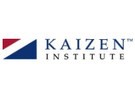
Kaizen Institute
Narasimhan Gopalakrishnan
Email: ngopalkrishnan@kaizen.com
www.kaizen.com
